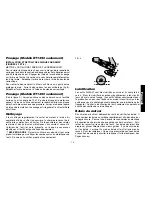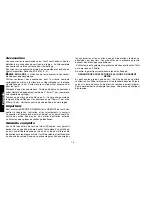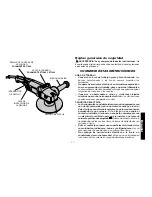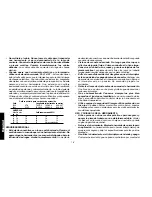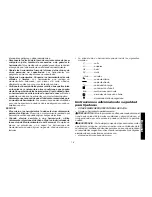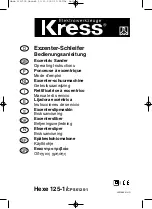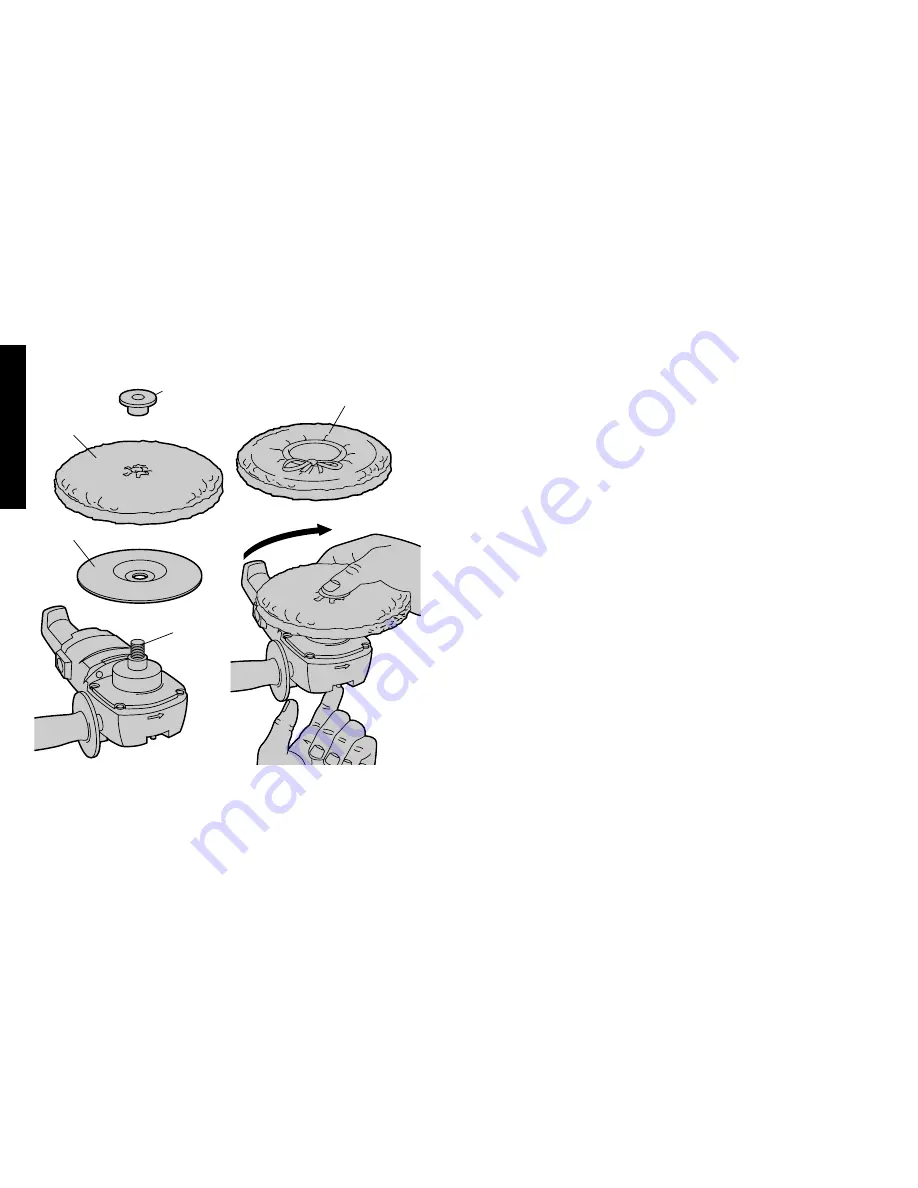
4
lower speed settings (2600 RPM and below), than at high speeds.
As the tool approaches 3000 RPM, the effect is considerably less
dramatic.
Keep in mind that, with a conventional polisher running at a typical no
load speed of 2400 RPM, the tool slows down to about 2000 RPM
under a polishing load. Your ET1490 will continue to run at 2400 RPM
(or any speed you select with the control wheel) as a load is applied.
Since it doesn’t slow down, the speed may be greater than you’re
used to so some extra caution should be observed until you get the
“feel” of your polisher. If you feel the speed is too great, you can, of
course slow the tool down with either the trigger switch or the control
wheel.
Spindle Lock Button
TURN OFF TOOL AND DISCONNECT FROM POWER SUPPLY.
(See Figure 1) In order to prevent the spindle of the tool from rotating
while installing or removing accessories, a spindle lock button has
been provided in the gear head of the machine. To lock the spindle,
depress and hold the lock button. NEVER DEPRESS THE SPINDLE
LOCK BUTTON WITH THE TOOL RUNNING OR COASTING.
Attaching and Removing Polishing Pads
(FIGURES 4 & 5)
TURN OFF TOOL AND DISCONNECT FROM POWER SUPPLY.
To attach pad, push the hub of the clamp washer through the hole in
the center of the polishing pad as far as it will go. Engage the
hexagonal hole in the backing pad. Holding the three pieces firmly
together, place the assembly on the tool spindle. Hold the spindle
lock button while turning the pads clockwise to thread them
completely on the spindle.
To remove the pads, turn them by hand in the opposite direction from
normal rotation to allow lock button to engage spindle, then unscrew
pads in normal direction for right hand thread.
English
FIG. 4
CLAMP
WASHER
POLISHING BONNET
BACKING PAD
SPINDLE
FIG. 5
POLISHING BONNET



















